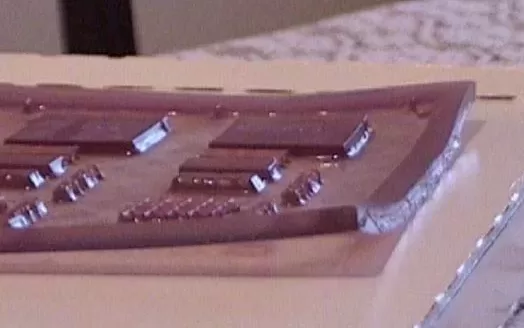This article is part of the FLEXO FLAW FIXING series
In the field of flexo printing, achieving flawless prints over large areas is critical, yet challenging. This difficulty is largely due to constant poor contact during flexo printing process, which results in large area defects that affect the quality of the output. Here, we examine the causes of these defects and offer practical solutions to mitigate them, leading the way to improved print quality.
Causes and Remedies
Thickness Variation in Plates and Mounting Tapes
- Cause: It is a common problem in flexo printing, resulting in uneven ink transfer and inconsistent print quality.
- Remedy: The immediate remedy is the careful selection of high-quality printing plates and double-sided adhesive tapes with minimal thickness variations. In addition, routine calibration of equipment ensures that such variations do not affect the desired print result.
Inadequate Printing Pressure
- Cause: This is another common cause of poor ink transfer from the plate to the substrate. The visual hallmark of this problem is often light or missing print areas.
- Remedy: This can be prevented by carefully adjusting the pressure between the plate cylinder and the anilox roller or between the plate cylinder and the substrate to ensure optimum ink transfer. Regular maintenance of the printing equipment will also prevent this problem from recurring.
Substrate Thickness Variability
- Cause: This can disrupt the consistency of print quality over large areas. Variations in substrate thickness can lead to uneven ink application, resulting in spotty or inconsistent prints.
- Remedy: The remedy is to adjust the printing process to account for these variations, along with a rigorous substrate selection process that ensures consistency in material thickness.
Imbalance in Plate Cylinder or Anilox Roller
- Cause: It primarily results in a distorted image or text on the substrate – a result of uneven ink application.
- Remedy: Addressing this problem requires regular equipment checks for concentricity and balance, as well as maintenance routines that ensure all parts are working in harmony.
Inadequate Anilox Roller Volume
- Cause: It negatively affects ink transfer efficiency, resulting in faint or incomplete prints.
- Remedy: The solution is to adjust the volume of the anilox roller to the specific printing task and to continually evaluate the anilox roller to maintain the correct ink volume for each job.
Inadequate Fill Level of Blade Chamber
- Cause: This can cause streaking or mottling in the print due to inconsistent ink application.
- Remedy: Remedies include ensuring an appropriate ink level in the chamber doctor blade and verifying the operational integrity of the ink pump to facilitate consistent ink delivery throughout the printing process.
In Summary
Addressing the causes of poor contact in flexo printing through vigilant monitoring and timely intervention not only reduces print defects over a large area, but also underscores a commitment to excellence in printing practices.
By taking these steps, printers can significantly reduce the incidence of large-area defects and ensure that their output consistently meets the high standards demanded by the industry. This journey of continuous improvement and adaptation is critical to the continued success of flexo printing operations.


![[Flexo Flaw Fixing] Large Area Defects](https://flexopedia.net/wp-content/uploads/2022/07/070_Skip_Out.png)
![[Flexo Flaw Fixing] Mechanical Print Damage](https://flexopedia.net/wp-content/uploads/2022/07/69978309_0cdc9eb8b8_c.jpg)

![[Flexo Flaw Fixing] Dirty Print](https://flexopedia.net/wp-content/uploads/2022/08/dirty_print.jpeg)
